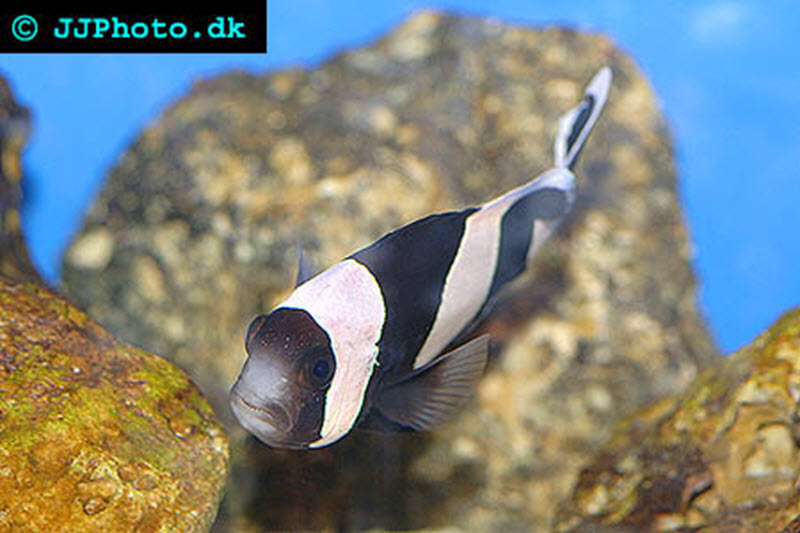Saddleback Clownfish – Amphiprion polymnus
Common name: Saddleback Clownfish, Saddleback Anemonefish
Scientific name: Amphiprion polymnus
Max size:5 in / 12.5 cm
The Saddleback Clownfish is an interesting experience due to its beautiful pattern and unusual swimming pattern. It moves up and down in an almost erratic looking motion when they swim. This species of clownfish has gotten its name from the saddle shaped white field that it has on the back half of its body. The “saddle” stretches from the dorsal fin down over the body.
You can find both tank raised and wild caught specimens in the trade. Wild caught specimens are much more sensitive than tank raised specimens and can be hard to acclimatize to an aquarium. I recommend buying tank raised Saddleback clownfish if possible. Another reason for doing so is that the harvesting of clownfish for the aquarium trade is threatening the clown fish populations in some areas.
The Saddleback clownfish is native to the Eastern Indian and Western Pacific Ocean where they are found living on reefs close to host anemones.
Aquarium setup
The Saddleback clownfish is best kept in an aquarium of at least 30 gallon / 120 L. A smaller tank can be used for a single pair as a breeding tank. The aquarium should be decorated with a lot of caves and hiding places among live rock and coral. This fish does very well in a reef tank and is completely reef safe. Provide if possible plenty of live rock with algae growth where the fish can graze algae.
The Saddleback clownfish can be kept with most other small and friendly reef fish and invertebrates but should not be kept with small shrimps. (They will eat the shrimp.) This fish does not need an anemone as long as plenty of hiding places are provided but it seems like they might do better and be less stressed if an anemone is provided. The anemones Heteractis crispa and Stichodactyla haddoni are recommended for this species of clownfish.
The Saddleback clownfish is usually friendly to other fish including other clownfish and are best kept in a small group. If you want to breed them it is best to buy a group of juveniles or an already established pair.
Feeding Saddleback clownfish
The Saddleback clownfish is easy to feed as it is omnivore and accepts almost all types of food. They can successfully be fed high quality marine flake food that contains both vegetable and meaty matter. I do however recommend giving them a more varied diet where a good flake food is used as a base and is complemented with items such as crab and shrimp meat as well suitable vegetables. The saddleback clownfish likes to eat algae and will graze on algae if the aquarium contains healthy algae growth. If the aquarium lacks algae it’s extra important to provide plenty of vegetable matter in their diet. Feed your fish 2-4 times a day.
Breeding Saddleback clownfish
The Saddleback clownfish is not the easiest of the clownfish species to breed, but you should still be able to breed it if you try and are patient. It is easier to get tank raised fish to spawn than wild caught specimens. It can be bred in much the same way as other clown fish species and if you want to breed this clownfish species I recommend that you read our article on clownfish breeding. The fry are small and sensitive to poor water quality. Make sure that you have a suitable very small fry food available when the fry becomes free swimming.
